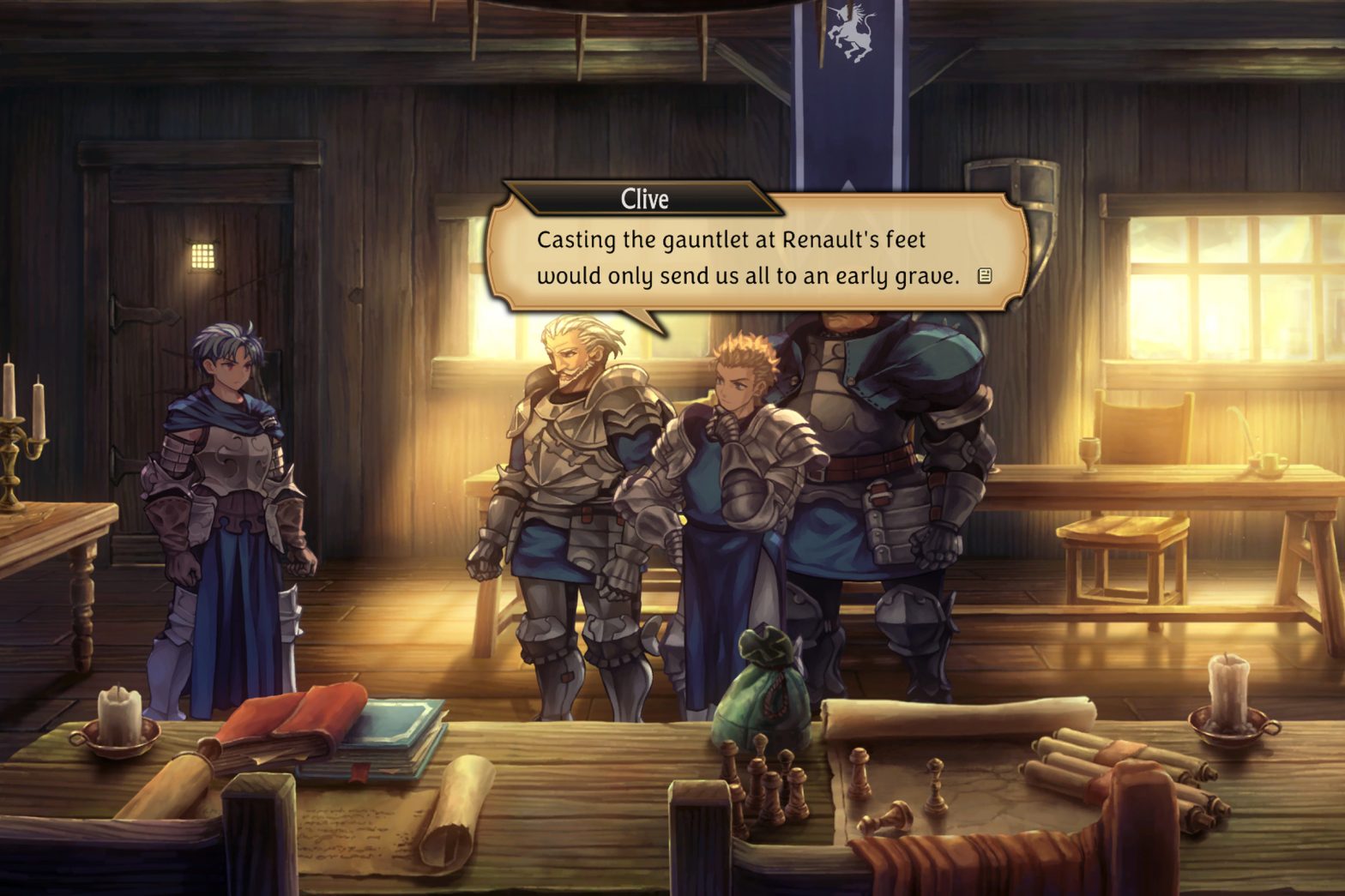/
Vanillaware, the studio behind 13 Sentinels and Odin Sphere, is trying its hand at a large-scale tactical RPG inspired by the classics.
Share this story
:format(webp)/cdn.vox-cdn.com/uploads/chorus_asset/file/25102422/UO_Clive_Discuss.png)
More than just about any other game studio, Vanillaware is known for its style. At the same time, the developer is constantly shifting between genres. It originally made waves with the side-scrolling action RPG Odin Sphere, and more recently released the sci-fi epic 13 Sentinels, which is part visual novel, part turn-based mech-vs-kaiju combat. Holding all of these disparate ideas together is Vanillaware’s incredible 2D art, along with a clear to desire to experiment.
Given how the studio loves to jump around so much, it’s probably not too surprising that its next project, Unicorn Overlord, will be a grand-scale tactical RPG inspired by the classics. Ahead of the game’s launch next March (it’s coming to PlayStation, Xbox, and the Switch) I had the chance to ask producer Akiyasu Yamamoto a few questions about how the game came about, and what it’s like building a new fantasy universe from scratch.
This interview has been lightly edited and condensed for clarity.
Which aspect came first: did you start with the idea of making a new tactical game, or did that genre stem from this new fantasy universe?
Yamamoto: The former. We’ve always been fascinated by tactical RPGs, RPGs, and tactical games from the ‘90s, the era of the 16-bit systems. Presently, tactical RPGs are dominated by well-established IPs, and there haven’t been many brand-new titles emerging in the consumer market. With our determination and love for tactical RPGs, we decided to create Unicorn Overlord by remixing elements that excited us in both digital and analog games transcending the boundaries that defined the games of the ‘90s.
There are a lot of existing fantasy universes, including a handful developed at Vanillaware. There’s also a lot of competition when it comes to tactical RPGs. What in your mind makes Unicorn Overlord different?
Yamamoto: When we began proposing internally with the team to make a new tactical RPG for our next game, we formulated ideas on what this can become. We then came up with the hypothesis that the limitations of 2D graphics in the 16-bit era led to depicting the world from an overworld perspective, creating a sense of grand scale with systems supporting this view. Especially given Vanillaware’s expertise in 2D graphics, we felt that we were the perfect team to develop a game reminiscent of that era yet fully modern in all respects. We approached that challenge with a sense of duty and built the game accordingly.
Are there things you learned from 13 Sentinels in terms of making a large tactical game — especially one with so many characters to keep track of — that’s also approachable to players?
Yamamoto: Development of this game began in 2016, overlapping with the development period of 13 Sentinels. While there was probably some knowledge on the programming and resourcing side of things that we shared with 13 Sentinels, our main inspiration for this title has more to do with incorporating ideas about resource management for numerous characters inspired from the tactical RPGs of the’ 90s that fascinated us at the time.
:format(webp)/cdn.vox-cdn.com/uploads/chorus_asset/file/25105276/unnamed.jpg)
We would like to mention that the implementation of the event archive in the “Analysis” part of 13 Sentinels, is where we received some really great feedback from our players. Therefore, in this project as well, we have prepared an extensive text archive revealing the backgrounds of many characters and their interrelationships. You can imagine that the localization for this can be quite challenging, but the team is proud of their work to implement it, aiming to convey the charm of this world to everyone.
Is approachability a big concern for projects like this in general? Do you worry much about reaching a large audience, or is the goal to satisfy the more dedicated players?
Yamamoto: The latter takes precedence in importance. Establishing something we find interesting as the core, then carefully refine and enhance it to be enjoyable to as many people as possible is our main objective for this title.
Is there something about strategy games that makes them a good vehicle for telling large stories like this?
Yamamoto: After developing this game we think that rather than conveying a grand story in size, in comparison to the expansive story in 13 Sentinels, the biggest excitement felt playing this title comes from overseeing activities from above, creating a sense of scale and epicness. While war-themed Shogi and Chess form the basis of gaming, table RPGs, the precursor to RPGs, emerged from war simulation games where we added protagonists and NPCs.
For now, although we haven’t reached an answer as to why we find excitement in these types of tactical games, we incorporated elements that we think will be very exciting for players to enjoy in our era.
